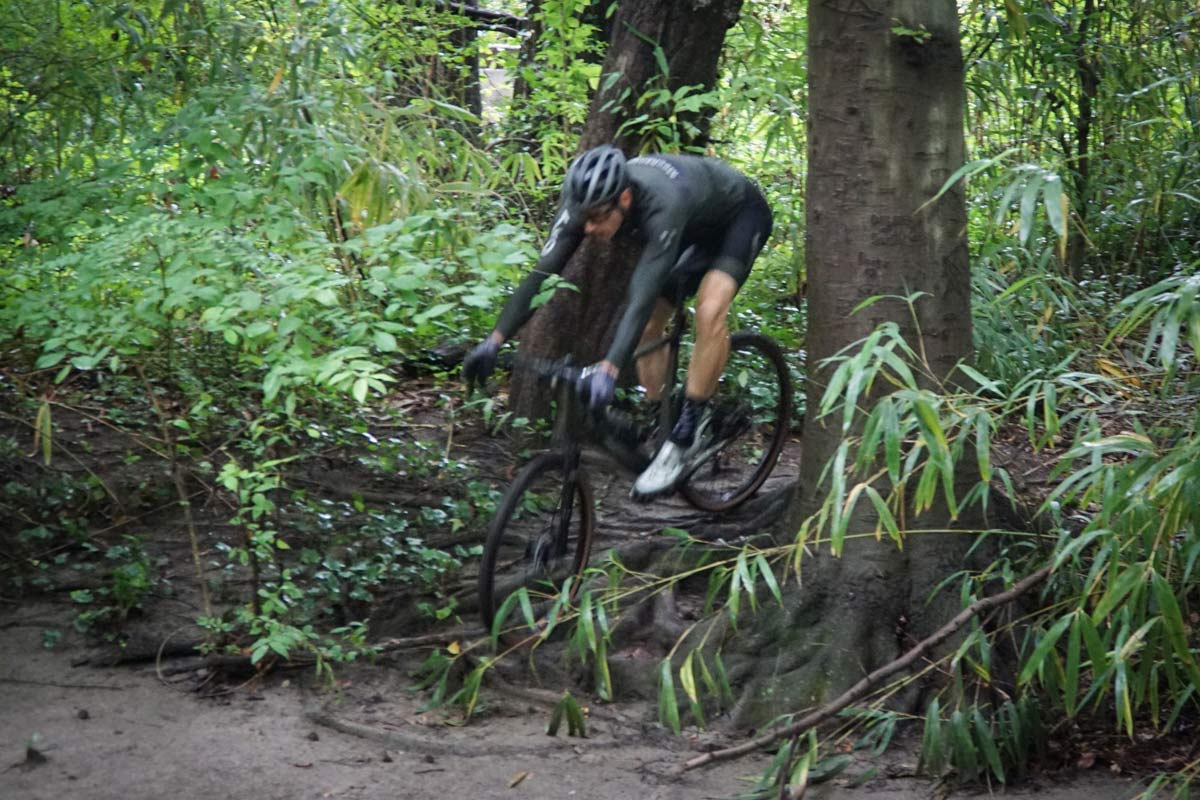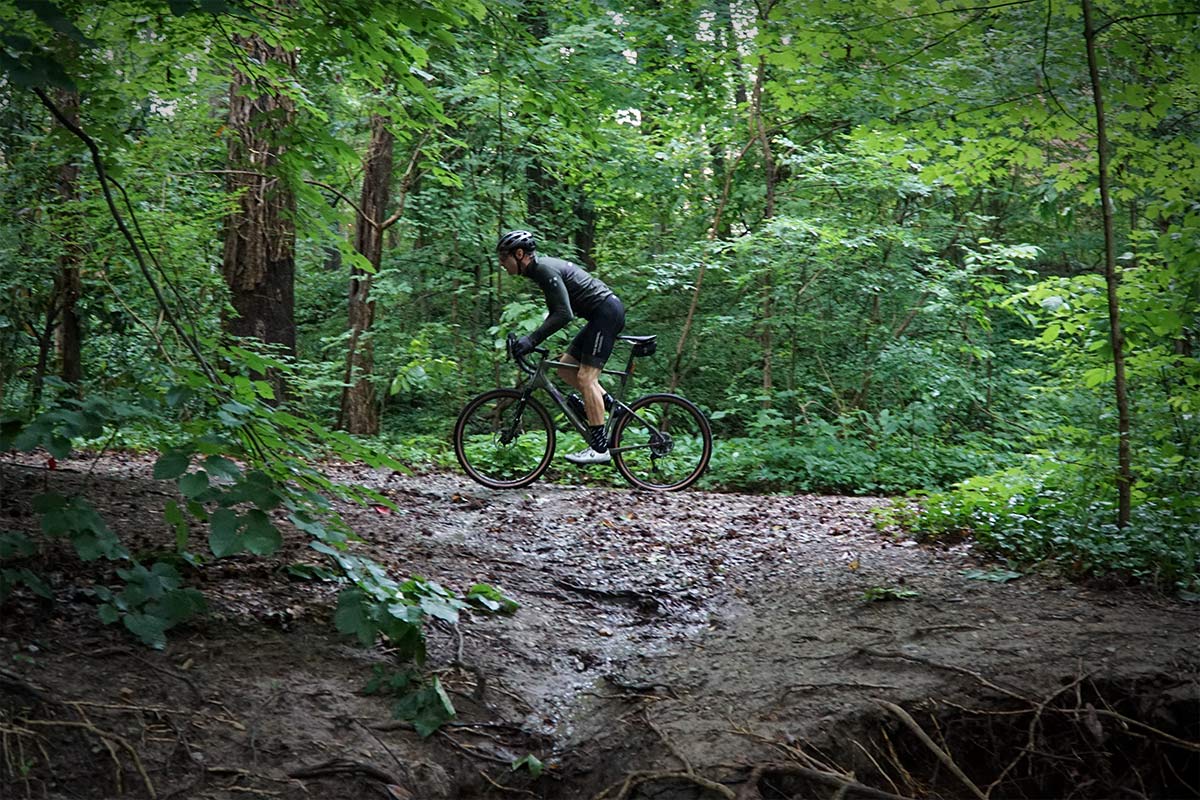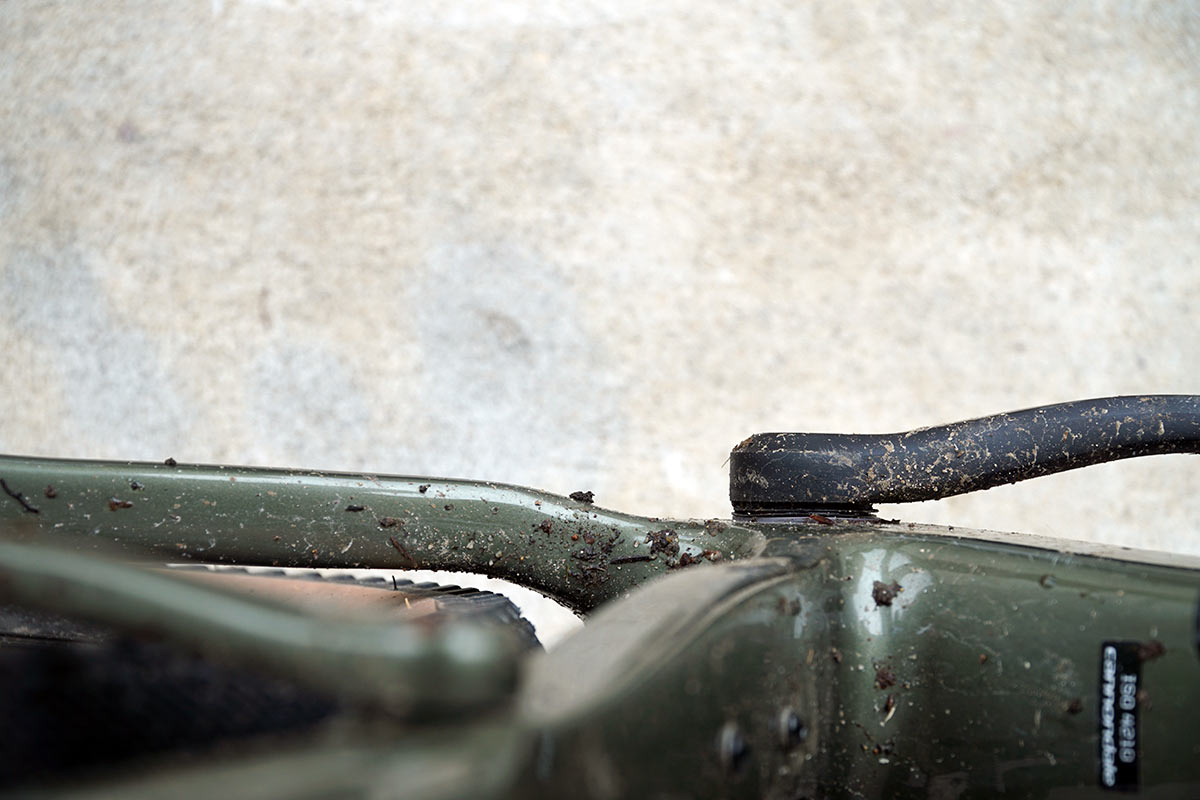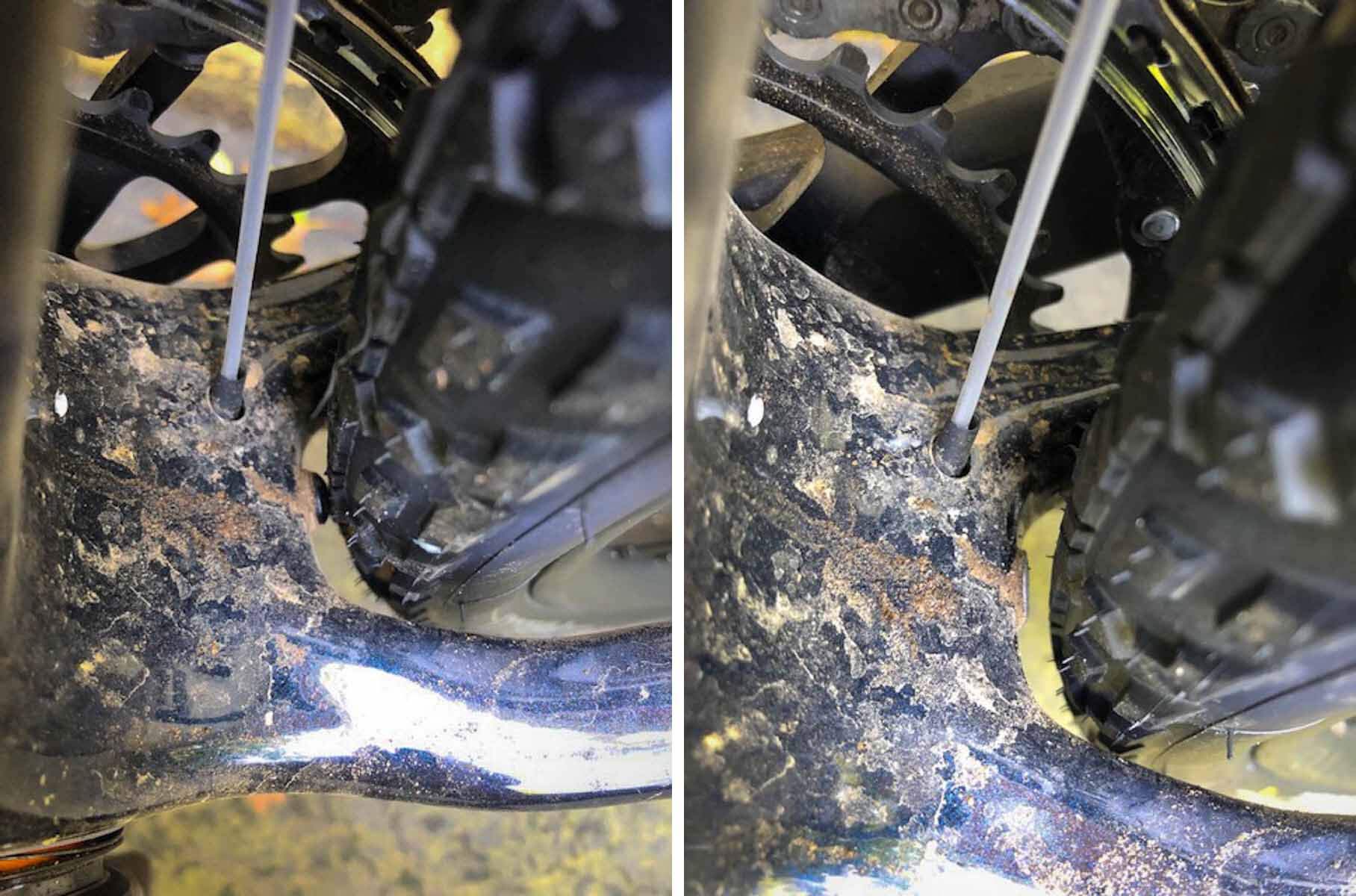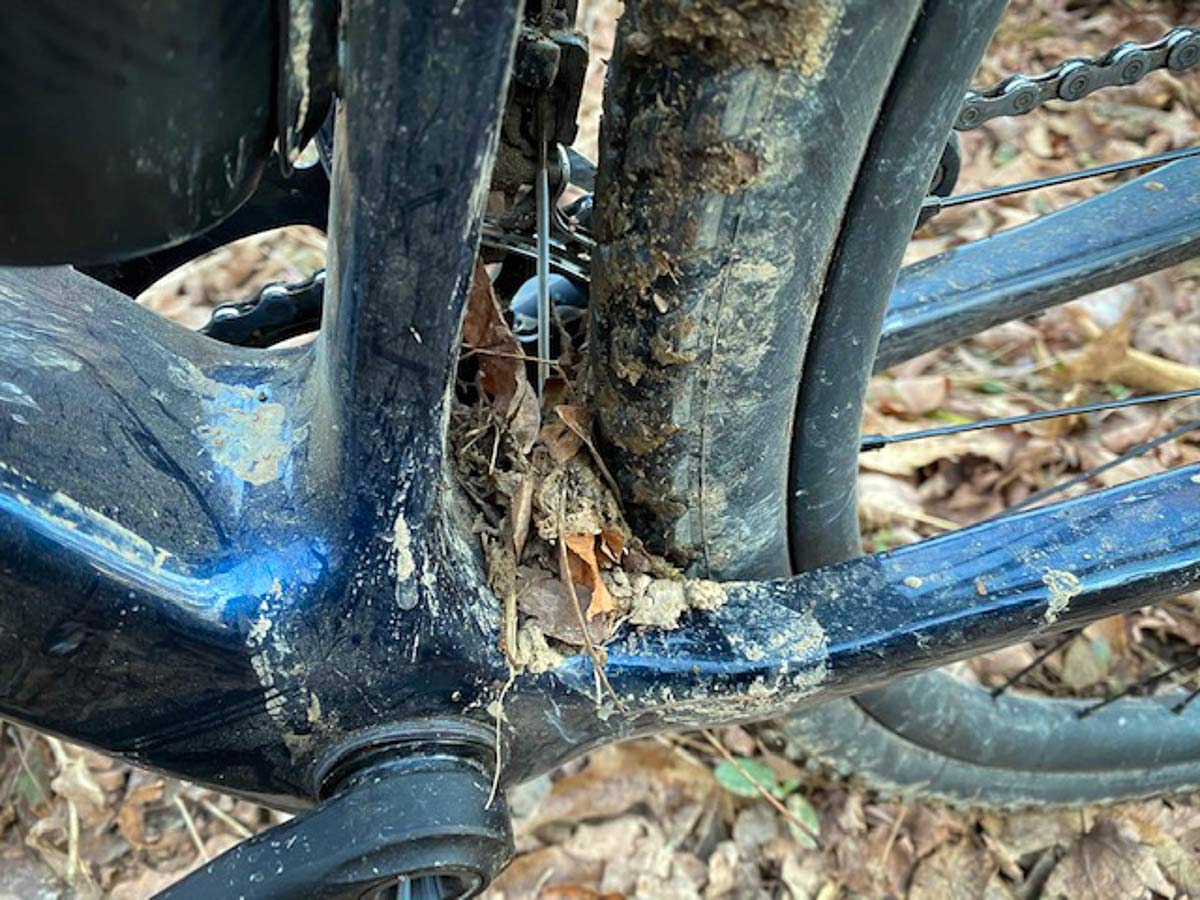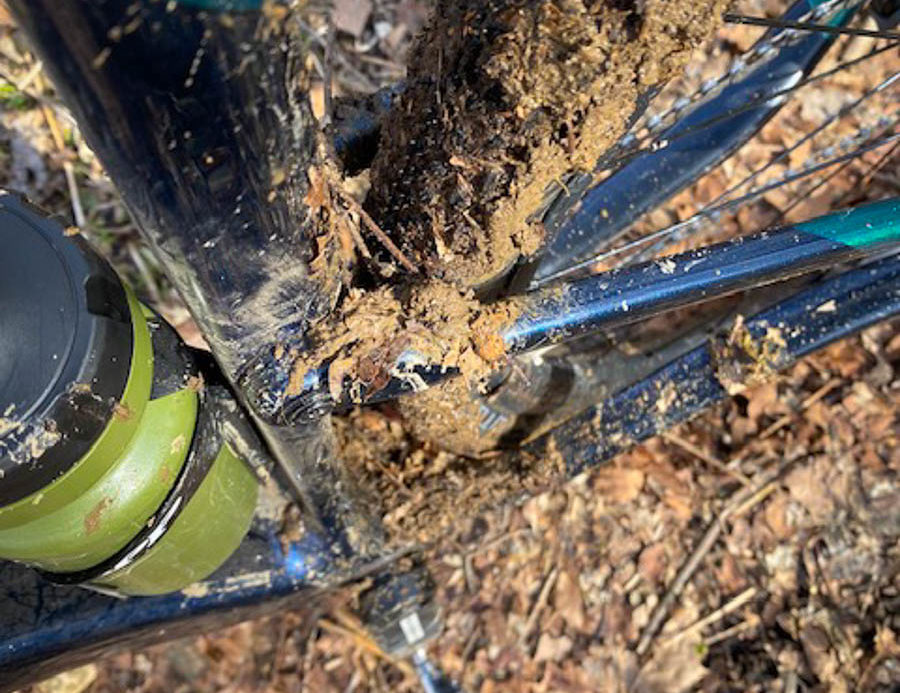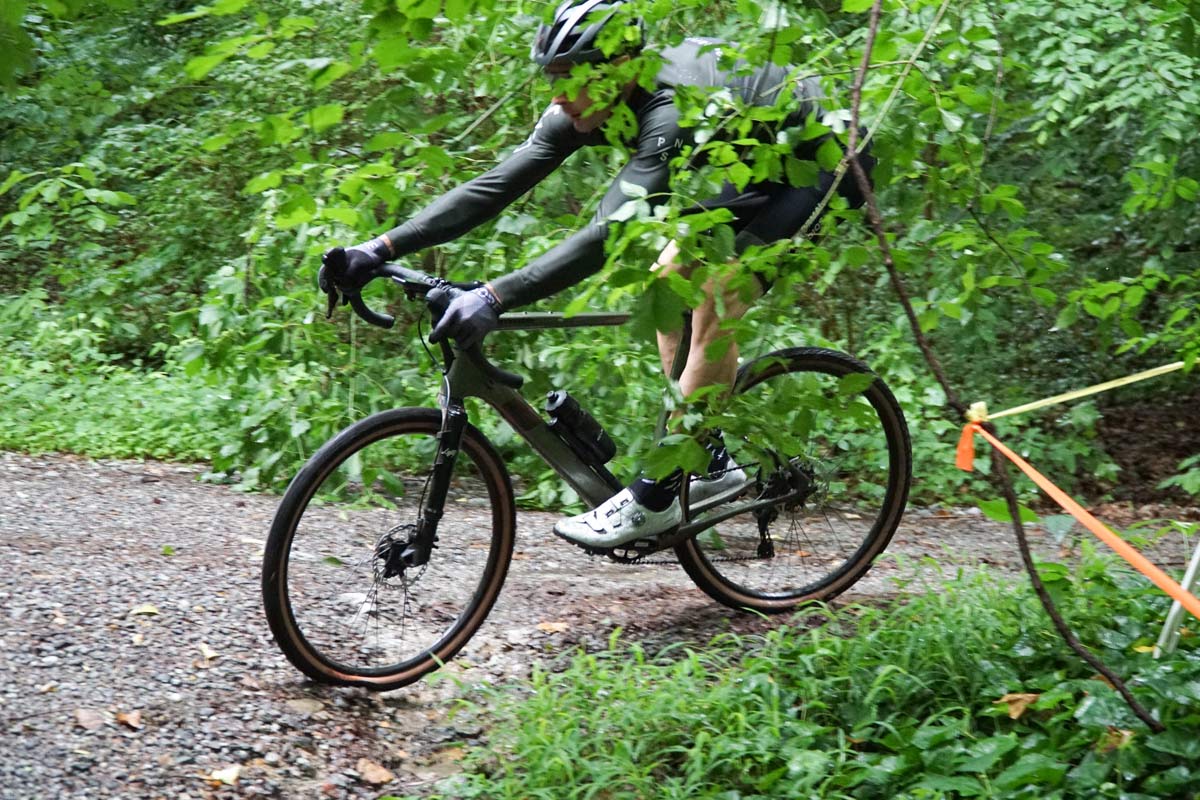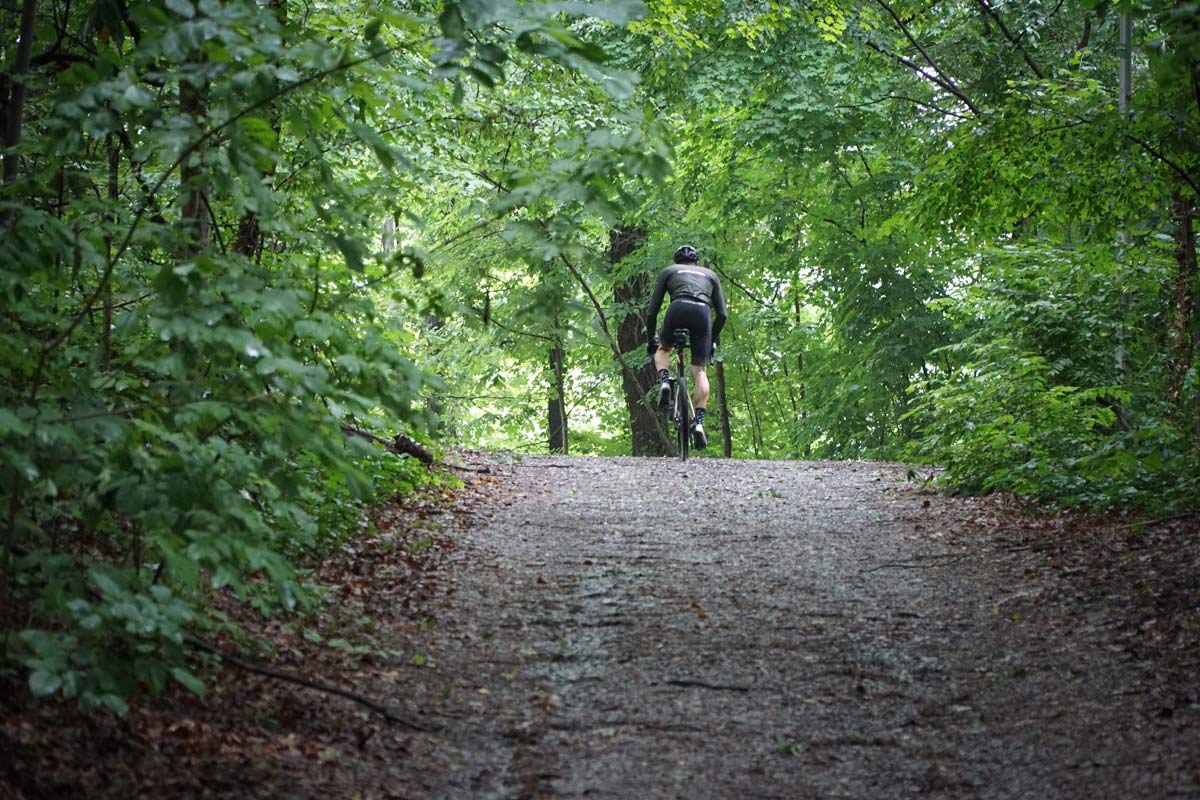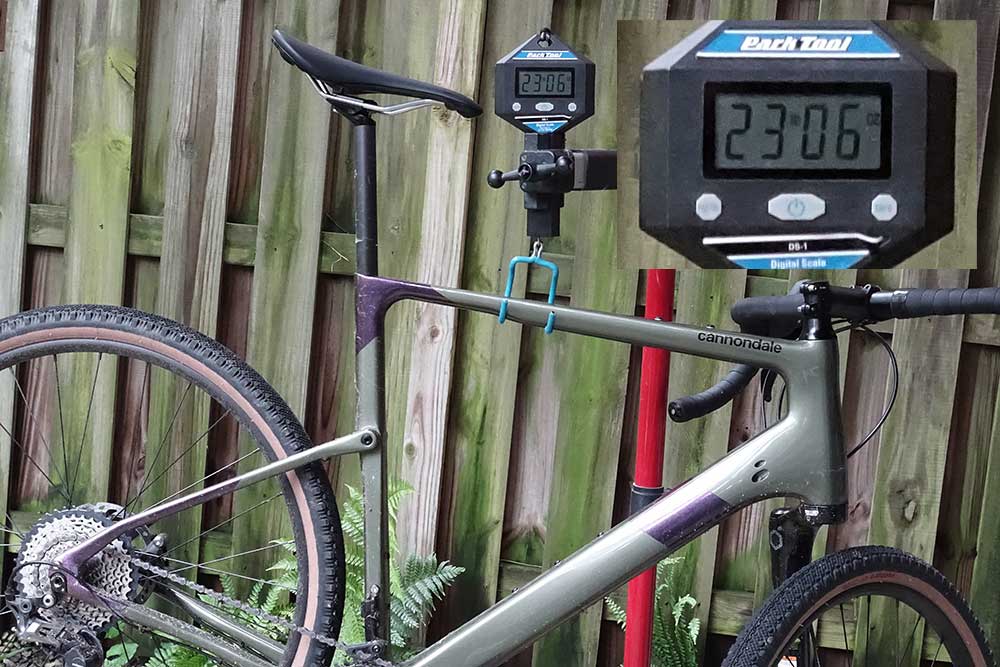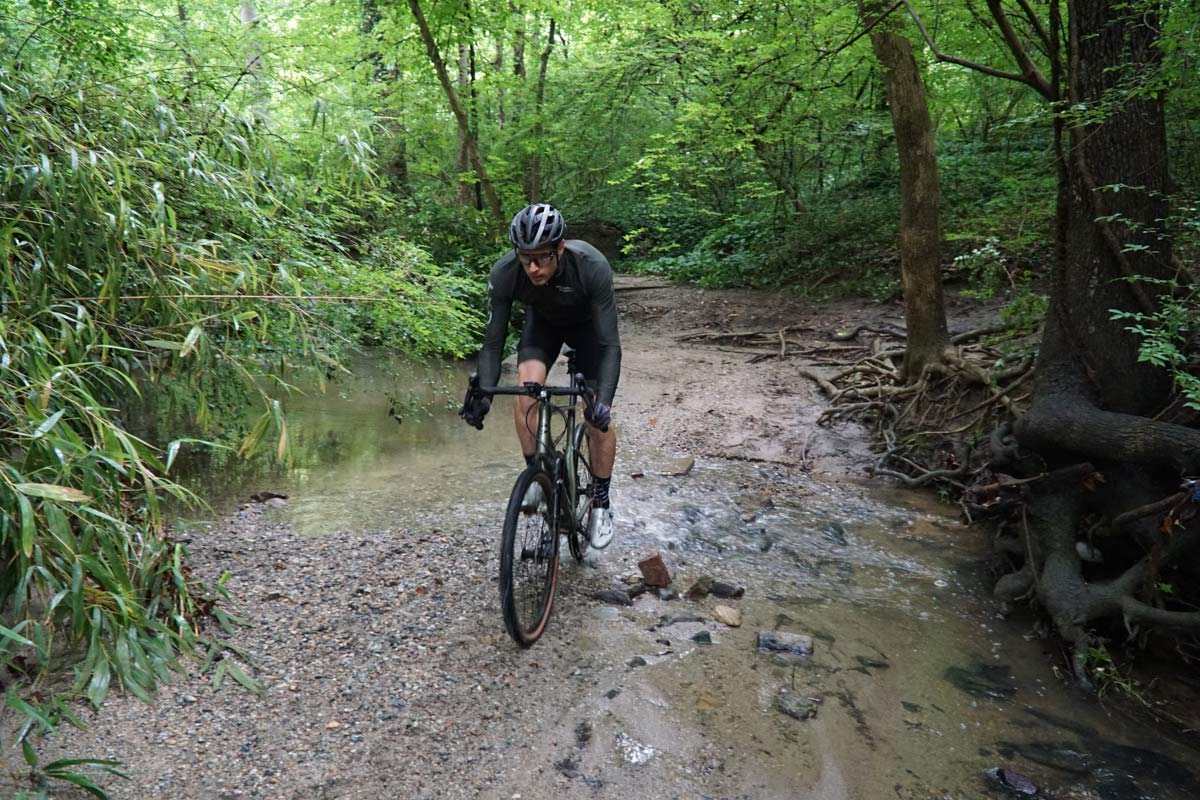The Cannondale Topstone Carbon Lefty is the brand’s top shelf gravel bike offering, and like many things Cannondale, it’s unique. Which is to say, this bike will have its audience, and it’s probably more niche than a typical gravel bike. But as they say, riches are in the niches, and for a certain type of rider, this bike could be just the ticket.
To help put this review into perspective, it’s worth noting a few things. Zach rode the original version with the rigid fork and 700c wheels…not me. At 6’2″, I typically ride gravel bikes with 700c wheels.
The smaller 650B size, whether on road or mountain bike, usually feels squirrelly under me. Or, at least, inefficient. But as you’ll soon see, there’s a good reason Cannondale shifted to 650B wheels and tires for this model…
Cannondale Topstone Carbon Lefty review
The full tech story on this bike is in our launch coverage post. That one focuses on the new Lefty-equipped model and fork tech, because the frame itself was launched in summer 2019 and carries over. Since then, Zach had plenty of time aboard the original 700c model, so I’m incorporating some of his opinions and photos into this review to give you a broader picture of this bike.
Following his first impressions from the launch, a longer term test give him a better idea of the bike’s pros and cons. Namely, that the front end felt too harsh in comparison with the Kingpin rear suspension, and that tire clearance was rather limited.
The new 650B-wheel-and-Lefty-equipped model solves both of those problems.
It’s all about tire clearance
Above, tire clearance with the stock WTB 650B x 47 tires, which measured 48.5mm at the widest point of the tread blocks when mounted to WTB ST i23 rims. Below, with 700×40 Pirelli Cinturato M gravel tire, which measured 40.71 on the stock Cannondale carbon rims.
So, upside, you can run lighter, narrower tires and still get a big foot print. Downside, it’s still going to be tight. The Pirelli tire shows how a tire with real tread blocks on it will get dangerously close to the fender mount bolt on the chainstay yoke. Zach had to remove that to avoid rubbing the tire.
Above, the Pirelli tire proved too big to work with the frame even in damp (but not super muddy conditions). The chainstay shelf tends to catch a lot of crud, which builds up over time and slows down the bike with a tire anywhere close to 40mm. Cannondale claims the frame has clearance for up to 40mm tires, but that will obviously depend on the tire choice and how it fills out the rim. With the Pirelli measuring slightly larger than 40mm on these rims, it’s not surprising it didn’t work. But Zach also tried to run 700c x 40mm WTB Raddler tires which measured just under 40mm, and those too ran into mud clearance issues.

When equipped with the stock 700c x 37mm WTB Riddler (which measured about 38mm wide on these rims), which has very low profile center knobs, the tire has adequate clearance. Though in Zach’s opinion, it’s still too close for any real wet weather riding. The stays pack up with mud quickly, and the stock Riddlers don’t provide enough grip in the mud, leaving you wanting a more aggressive tire, but then running into even more clearance issues. Bottom line, if you’re running 700c wheels in the Topstone Carbon, don’t expect to fit much larger than the stock tires if you plan on encountering any mud or damp, leafy trails.
Which is to say, in our opinion, this bike is better off with 650B wheels, and tires that max out about 47mm wide.
It’s also about balancing the suspension
I can’t compare this to the original, but I can say that this bike feels balanced. The 30mm of fork travel is short enough that it really needs to be run with enough air pressure to prevent bottom out. Which means it’s mostly there to absorb big hits rather than soak up vibration. Fortunately, the fatter tires do a fine job of muting that.
The Kingpin rear end, too, seems best suited to taming sudden impacts, like potholes, and generally reducing the severity of rippled washboards and roots.
That said, I finished every ride feeling comparatively fresh, so the tires-plus-suspension system seems to do the trick. And it’s efficient. The Lefty Oliver’s new damping profile keeps it riding high in the travel, so it never feels bouncy when you’re out of the saddle stomping on the pedals.
Because the rear end’s flex is measured in weighted saddle deflection, when you’re out of the saddle, it’s not doing nearly as much. So pedaling is ultra efficient, too.
All that cushion creates a tradeoff
On the one hand, it’s heavy. Not quite as heavy as the Niner MCR I reviewed, because there’s no rear shock and all that, but not light compared to unsuspended gravel bikes.
Our size XL 2021 Cannondale Topstone Carbon Lefty actual weight came in at 23lb 6oz (10.6kg). Cruising along, it’s heft isn’t so noticeable. Where it becomes a penalty is in acceleration. The Topstone Carbon Lefty never really felt quick. Or sprightly. It isn’t a bike I’d want to lead out a group with, more one that I’d want to hang back and ride my own ride with.
On the other hand, it crushes rough terrain. As in, really rough. It mows down singletrack, powers through root sections, and motors through washouts and rain ruts. To me, rough terrain is this bike’s raison d’être. It’s just unfazed by it.
During the test, I was looking for things to hit. It was kinda fun. If pushing the limits of what a “gravel bike” should be able to do is your idea of a good ride, this might be the bike for you. Same if you prioritize Fun over Speed.
It has top tube bag mounts and three bottle cage mounts, so it’s ready for all-day grinds. It’s just not the bike I’d choose for most race days, unless we’re talking Grinduro’s gnarly courses.
